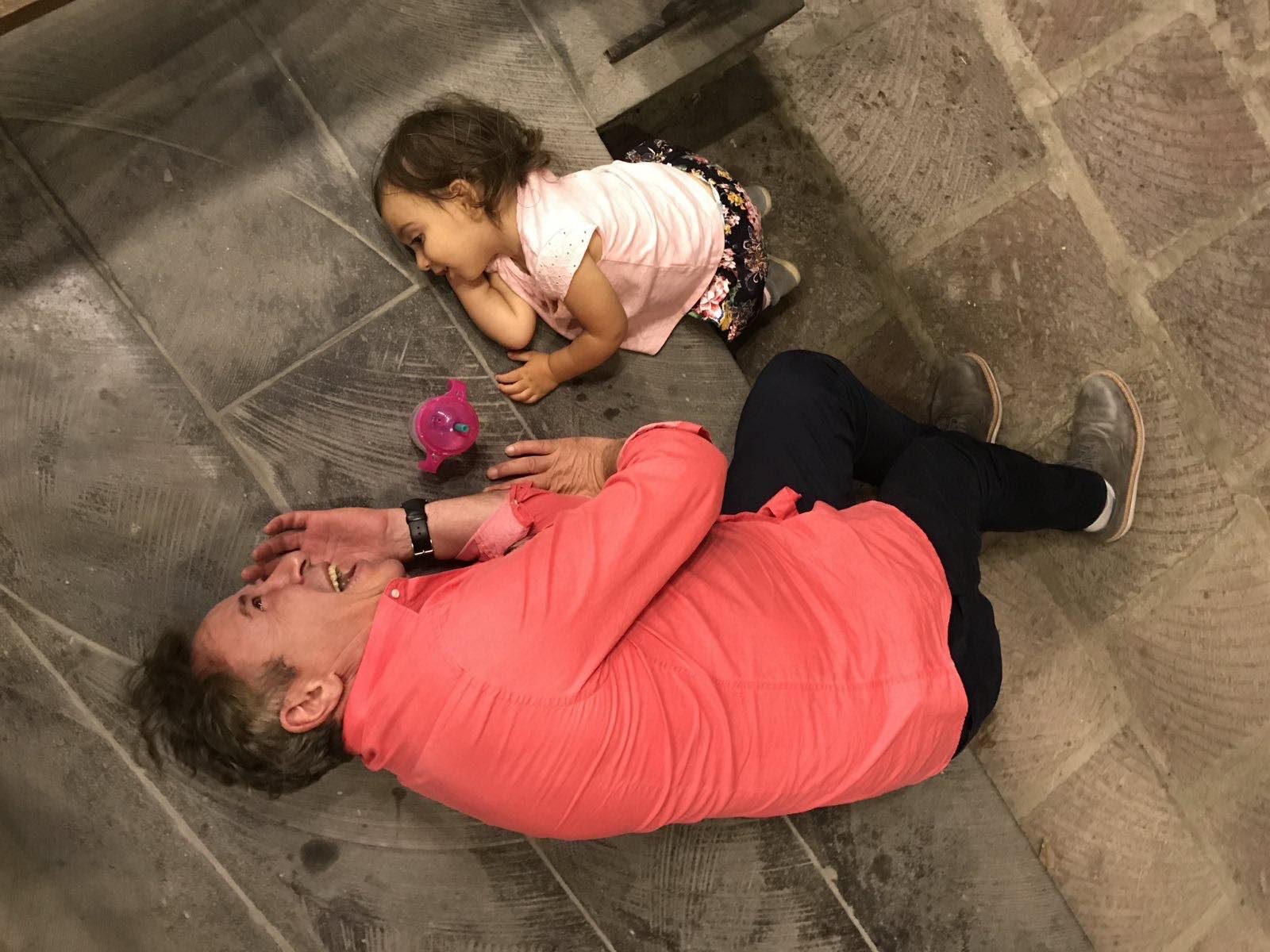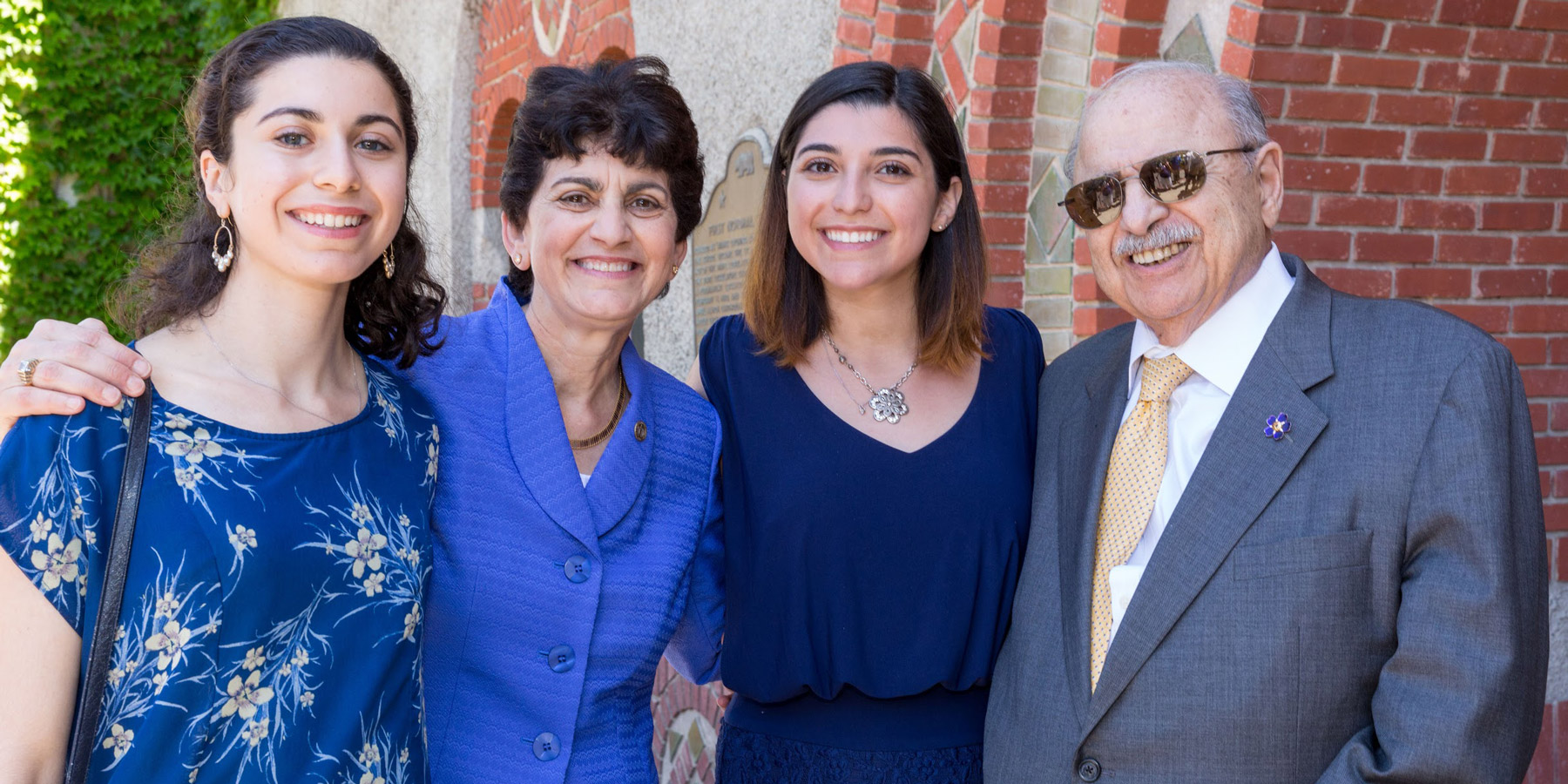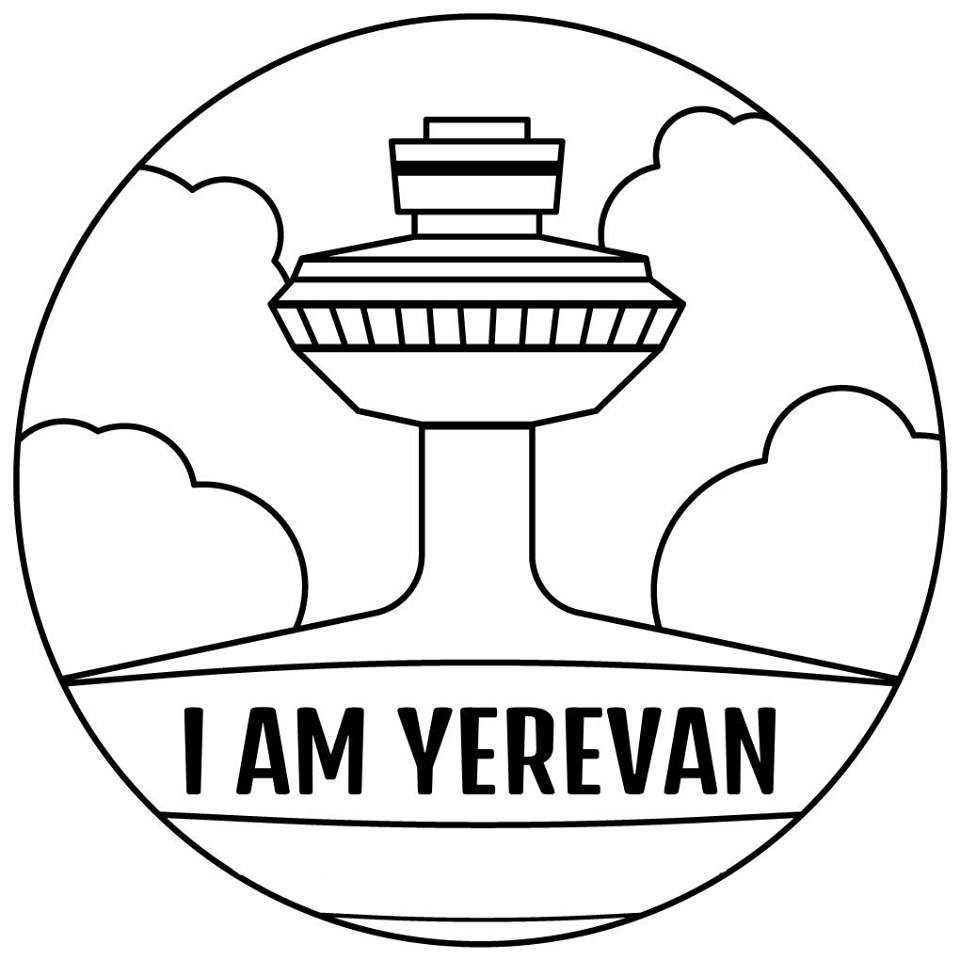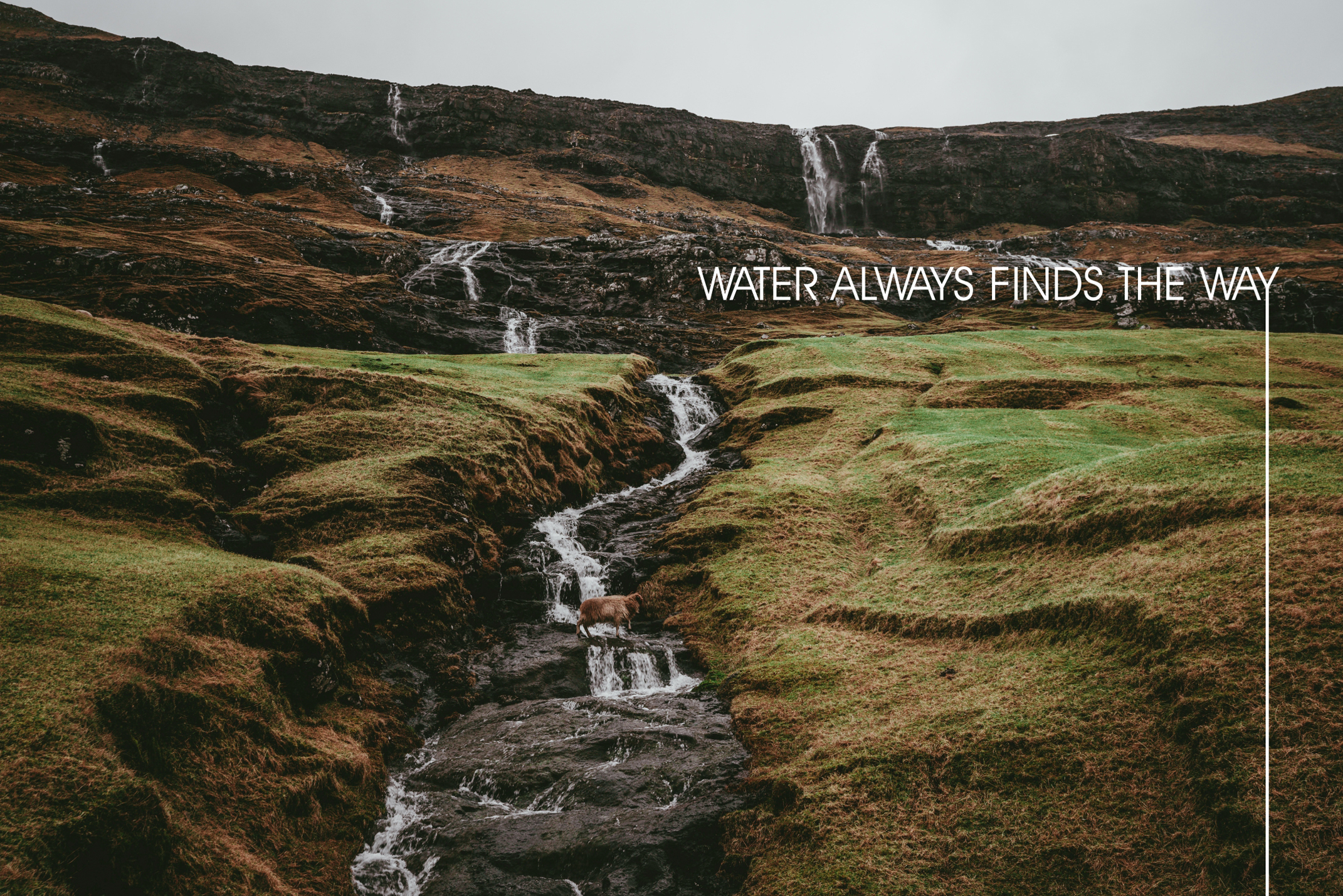
Never Stop Working On Yourself
April 10, 2020
Jirik’s Culinary Cinematography: Crafting Memories in Every Bite
January 22, 2024In 2016, Mary Arshagouni Papazian became San Jose State University's 30th president and the first Armenian American female president of a university. We had a nice chat about her career, the Pandemic and the challenges of online instruction.
Ashot Khudgaryan - Before we jump into big questions, I would like to get to know what does a workday in your life look like?
Mary Papazian - Well, there's the normal day and then there's the not normal day. In normal times, I'm usually meeting with a lot of people, sometimes I’m traveling to national meetings, sometimes I’m meeting with students, faculty, and staff on my own campus, and often I am engaged in events and meetings in the community or with friends and donors of our university. But right now, like so many of us during this global pandemic, I'm working from home, so I'm on Zoom all day. I have met Eric Yuan, who is the founder of Zoom because it's a company in Downtown San Jose. So it's been interesting to watch how suddenly the world knows what they do.
But mostly I start the day with meetings about “what problems do we have to solve right now going online, what are some of the issues about housing and dining refunds and around campus safety, how do we ensure our faculty, staff and students have the support they need.” Now we are starting to think about planning for summer and for fall?
A. K. - So, earlier in your career you were teaching and then you moved on to actually organizing the teaching process. Do you miss teaching and how was the transition?
M. P. - I got into higher education because I loved my own discipline, which was literature. It was fantastic, you know, to be in a classroom and to engage with students and to help them ask questions and to see possibilities. That's always something I loved and it would make me happy to be back in the classroom one day again. It's a real pleasure. But I began to see that there was a way to have a bigger impact and I've been in a position where I've been able to help shape the environment more, in some new ways.
And what's really exciting about the position I'm in now is I'm able to shape up an institution and the way a whole institution thinks about what it does and actually have a small impact on how we think about learning and higher education, and that's a pretty exciting thing because there is a lot of education that goes into it.
We're always learning new things. I'm not teaching students directly now. I'm teaching colleagues, you know working with colleagues across campus as we learn from each other, but it's the greater impact that's exciting.
It's a transition, you know, you miss it, you miss the rhythm of the semester. Meeting a new class, and going through the syllabus and turning in grades, and then actually being free for a while to think about the questions that underlie your scholarship. That doesn't happen in the same way in my role now, but that's okay. Every now and then I get back into the classroom and it's always a lot of fun to do that.
A. K. - Yeah, you get to feel the vibes.
M. P. - That's it. It's the energy, you know, you're absolutely right. I do travel a great deal when I'm on campus. A lot of people need to see me. I need to see them. So I'll go and walk around, just to talk to students, because there's an energy there that reminds us why we do what we do.
A. K. - Is it possible to teach someone how to learn?
M. P. - It seems pretty simple but it's actually incredibly important and the reason it's so important is that knowledge changes and moves very quickly today. They say a skill is good for somewhere between two and five years today. We're learning throughout our entire lives and this fact changes the way you think about what people have to learn in a classroom for example. You're not going to teach them everything, every fact, every piece of information. Every part of a field that we used to think we had to know because there's just so much more now and nobody can absorb that much and a lot of things are retrievable through Google and other search mechanisms.
What you have to do is teach students how to assess what's really valuable, how to be real critical thinkers and bring a problem-solving mentality to whatever is before them and if they're able to do that and they have the frame and if you will help grow the branches of the tree on which to hang things, then they can continue to learn and adapt.
A. K. - Problem-solving and creativity are something that companies are looking for in people. So what are creativity and problem-solving for you and could they be transferred to people?
M. P. - We have downplayed creativity in the past. And so it's good to see it coming back. First of all, you need people with a multitude of perspectives around the table, so they asked different questions. So they push each other. If everybody thought the same, you wouldn't get out-of-the-box thinking, you wouldn't get anything that would move us in a new direction, which is essentially what creative thinking does for us.
You have to bring the creatives together with your science people and it makes both better. So what you do in the classroom, for example, is you set the classroom to solve a problem. Let's take the supply chain on a pandemic. Let's just take the current situation. We can't get personal protective equipment where it needs to be right now, for hospitals and such. It's a supply chain issue in part. It's a manufacturing issue, but it's really a supply chain issue.
Where did things end up? How do we know? You can put just your business supply chain people to it because they studied it, but you can add people who have different perspectives, maybe somebody coming out of engineering, and technology, somebody coming out of sociology that understands how people behave, and how communities behave.
How do you do it when there is fear and hoarding, and all of those other things and the consequence is life or death? And suddenly you're bringing your philosopher who can ask those ethical questions and that starts to create a different response - it stirs everybody up to think differently, and maybe to come up with something that's going to be more effective at the end of the day, but you need to put a real problem in front of people.
It needs to be something they care about, something that needs a solution, and then brings different voices to the table to help address them. And it has to be very engaging.
The old style of teaching what we call sage-on-the-stage is the professor at the front of the room lecturing to the students who dutifully take notes. It's not engaging and it's not creating problem-solving. But if you flip that and you put the problem at the center and you bring the students around it to help solve it then you're going to start to create both. You're going to address the problem and solve the issue, but you're going to bring creativity into it as well.
It also means really listening to each other around the room and being willing to make mistakes. You have to have a high tolerance of risk, you have to be able to when you're solving problems, but you've got to be able to take chances with your creativity. These are some of the approaches that we would take.
A. K. - There is a lot of conversation about retraining people. Do you have any thoughts about this?
M. P. - This is an interesting challenge. It's a big question actually in terms of what will happen to jobs and labor. There's no question that many jobs that we know today particularly with AI growing will disappear and some of them will be very good, even professional jobs. I think we are trying to understand what’s that going to be and figure out how you insulate somebody and make them continue to be relevant. There is a point where you will be able to reshape our entire societies on a different model.
Because not only is labor going to change but our lifespans are going to change. For example, gene editing is going to enable people to live longer healthier lives. By living longer lives they're not going to work so much. Right now, most of our life is around work. We have to redefine the purpose of life, what we care about, how we live, and how we support it, how we structure our societies, how we structure our economies and our politics.
So we have to recalibrate this and then we've got to figure out how we recalibrate the structure of our own society so that it can support the population. This pandemic is not over, this is going to get worse before it gets better and it hasn't even hit some of the really poor countries, you know, the African continent, India, parts of South America. Suddenly we're going to have a very different world. So I don't think we're prepared for it. I think the younger generation knows that ultimately this is going to be their problem to solve. It's going to take the Next Generation actually to really reshape some of this and to ask different questions.
A. K. - That sounds kind of scary that our generation is going to go through pretty tough solutions. Well, I hope there will be one.
M. P. - I'm going to tell you Ashot, I see this in our students too, they are ready for it. This is your generation. And we see this in Armenia, by the way, I mean who has really led the change? It's your generation. There's a sense that it's not even just the economy that's changing. It's climate change. It's the weather. I'm actually optimistic when I see the younger generation working and thinking. That's what gives me optimism about the future, to be honest with you.
A. K. - That brought up a positive context.
M. P. - You've got to have some optimism.
A. K. - So I heard that concerning the pandemic that you shifted to online and remote teaching. What are the challenges right now that San Jose State is facing in terms of online and remote teaching?
M. P. - Well, we have the technology, infrastructure to do it. The problem for us is that this sudden transition isn't the best way to go online. Online education in the right context can be very effective if you have to plan and think and organize. You organize a course differently when you're applying to do it online. The problem is that you had to make a quick change in the middle of the semester halfway through with a lot of faculty who have never taught online. So a lot of them are using Zoom, you know, they're doing an in-person class that's not in person the way we're holding our meetings for example, so you're not getting all the rethinking you would normally get.
Ideally, if you go into the summer or the next year when we have time to plan and it looks like we have to deliver at least some of our curriculum online, we will be able to provide more, instructional designers and work with faculty to help them actually set up the course in a way that fosters effective learning in an online environment.
So we're going to see some courses go well, others are going to be a little more of a challenge. We're trying to be flexible with both faculty and students. But the other challenge for us, to be honest, is that our students don't all have their own computers. Many of them are low income, they don't have all the resources or they don't necessarily have access to broadband at home.
How do we make sure they can actually access the online courses, so it's both of those issues and they themselves haven't necessarily learned how to learn in an online environment because they didn't expect to have to do it.
Meanwhile, we're investing in students by providing loaner computers and all of those kinds of things so they can access the courses. So it's not going to end after this semester. What we need to do going forward is to ensure that we're constantly responding to the needs of the times and our students.
A. K. - The last question. How education in San Jose State University will change after the COVID-19 pandemic? What do you think?
M. P. - Well, I think we're going to be more flexible about where people are and how we do things. One thing, for example, is we have already begun to digitize our processes just on the business side. For example, we introduced last year DocuSign which was a signature routing system. So now you don't have to move paper forms from one place to another. Well, that's been huge because when everybody's working from home, we can still get things done and we can route the documents that need signatures and the approvals and all of that.
There's a lot of concern about, you know, how many students will come back and will they and what form and you know, what needs do they have? So we understand that there is one concern that we all have and that is the security of data and privacy and all of those issues. Technology is great, but we have to be confident that we have the digital security in place. We're figuring it out as we go along.
I'm hoping that we’ve become more nimble, more prepared, more flexible, more adaptable, but we recognize what really matters and put that front and center.


Ashot Khudgaryan - Founded The99, which helps companies crystallize their vision, create stories, messages and campaigns that deliver core values and brand culture.
He's also the Co-Founder of Beyond Learning Hub, a project helping people build a career in tech.


